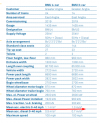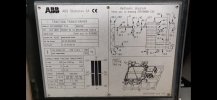Yes 331s coming to a stand has happened, you'd think the effect of the drag would be reduced the slower you go but that's not what happens, I assume as a characteristic of asynchronous motors. It doesn't help that the automatic holding brake applies aggressively at 1mph, and that drivers were never trained that the 'pan up' button is also the VCB reset button which is useful to know if you got stopped on the 'run-out' of a neutral section. For tho readers who aren't aware, overhead neutral sections are usually around 155ft long and have live, dead, earthed, dead and live sections (different phase/supply at both live sections hence the need for them being separated, with an earthed section between them). The main circuit breaker (VCB) next to the pantograph is opened automatically at the start, and closed automatically at the exit, by track equipment similar to AWS magnets.
Incidentally 331s are capable of coasting perfectly with the VCB open, but only when they are in a condition where the motors aren't used to run the aux converters - such as the dynamic brake being isolated, DRA set on the move, or 'running brake test' button pressed.
The traction system gets confused if any of the above conditions are corrected on the move while the VCB is open - this is felt by an alarming juddering (first time I felt it I thought we'd derailed it was that bad) from the traction motors. Clearly there's a software issue, we were told it was corrected a long time ago but it can still be recreated.



